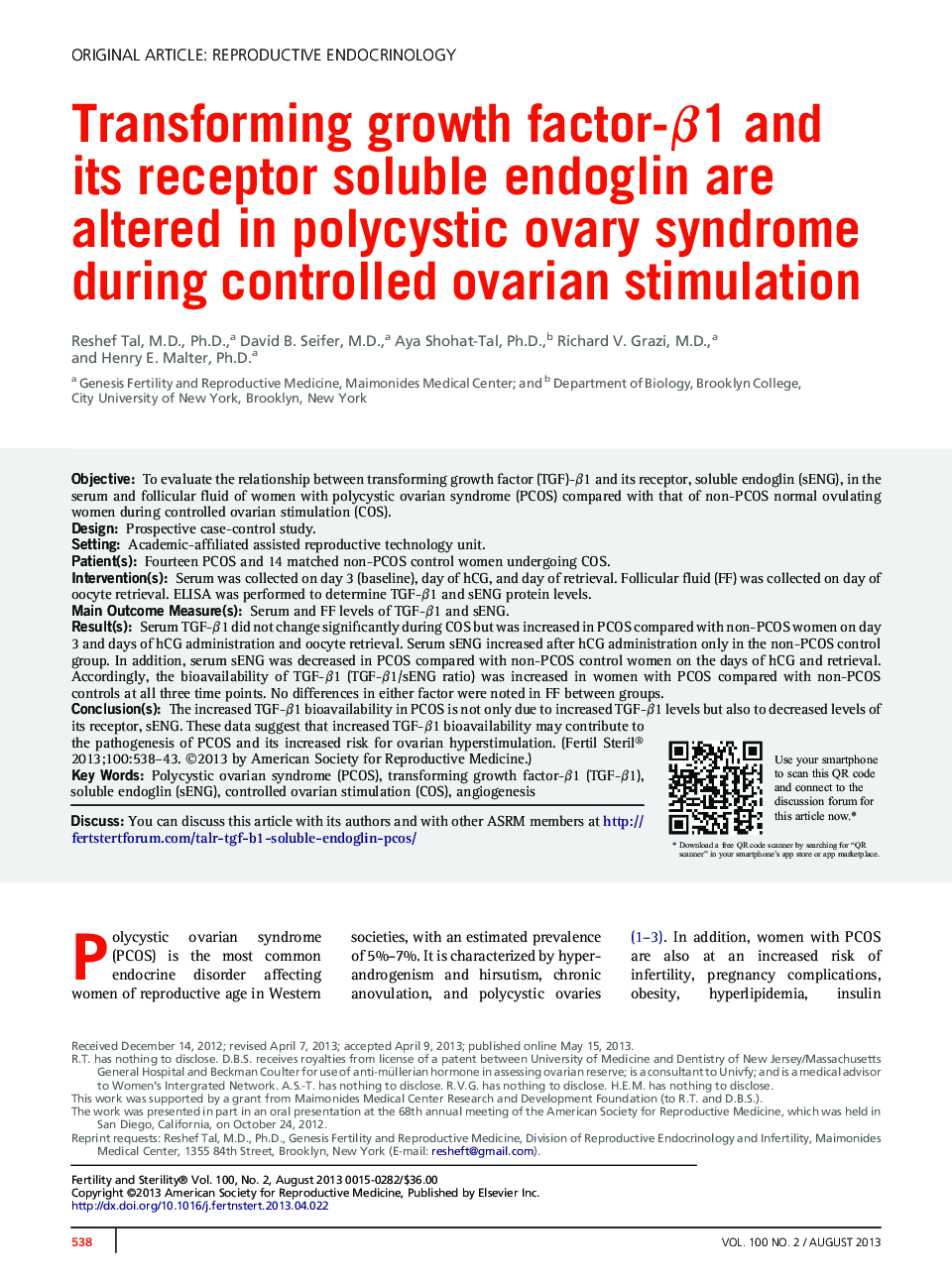| Article ID | Journal | Published Year | Pages | File Type |
|---|---|---|---|---|
| 3931635 | Fertility and Sterility | 2013 | 6 Pages |
ObjectiveTo evaluate the relationship between transforming growth factor (TGF)-β1 and its receptor, soluble endoglin (sENG), in the serum and follicular fluid of women with polycystic ovarian syndrome (PCOS) compared with that of non-PCOS normal ovulating women during controlled ovarian stimulation (COS).DesignProspective case-control study.SettingAcademic-affiliated assisted reproductive technology unit.Patient(s)Fourteen PCOS and 14 matched non-PCOS control women undergoing COS.Intervention(s)Serum was collected on day 3 (baseline), day of hCG, and day of retrieval. Follicular fluid (FF) was collected on day of oocyte retrieval. ELISA was performed to determine TGF-β1 and sENG protein levels.Main Outcome Measure(s)Serum and FF levels of TGF-β1 and sENG.Result(s)Serum TGF-β1 did not change significantly during COS but was increased in PCOS compared with non-PCOS women on day 3 and days of hCG administration and oocyte retrieval. Serum sENG increased after hCG administration only in the non-PCOS control group. In addition, serum sENG was decreased in PCOS compared with non-PCOS control women on the days of hCG and retrieval. Accordingly, the bioavailability of TGF-β1 (TGF-β1/sENG ratio) was increased in women with PCOS compared with non-PCOS controls at all three time points. No differences in either factor were noted in FF between groups.Conclusion(s)The increased TGF-β1 bioavailability in PCOS is not only due to increased TGF-β1 levels but also to decreased levels of its receptor, sENG. These data suggest that increased TGF-β1 bioavailability may contribute to the pathogenesis of PCOS and its increased risk for ovarian hyperstimulation.
